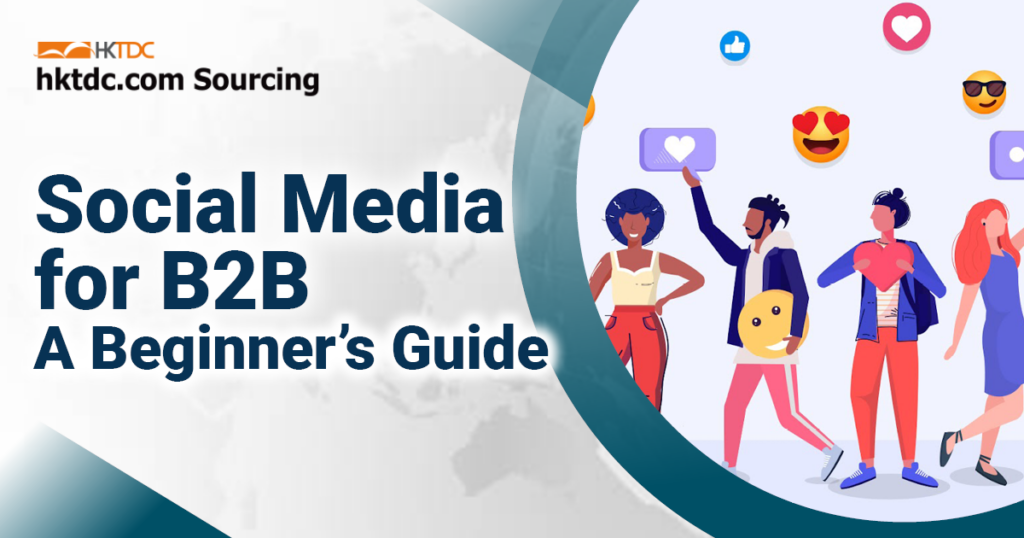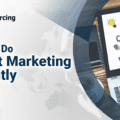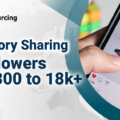Social media isn’t just a powerful outreach and engagement tool — it is also at the forefront of product research, peer recommendations, and brand discovery for B2B decision-makers. As such, it is imperative that B2B marketers get cracking on their social media strategies.
In this article originally published by Meltwater, we break down the essentials of B2B social media marketing, showing you how to utilize your social media accounts to their fullest potential.
Getting on the Right Social Media Platforms for Your Business
Tip 1: Choosing the right platforms for your brand
If you’re not already on social media, the first step that you should take is to decide which platforms to use. Find the balance between being present on several social media networks without spreading yourself too thin.
As a starting point, get yourself on LinkedIn and Twitter. Social media platforms like Instagram and Facebook are also beneficial because they help build brand awareness and allow you to direct traffic to your website. Most B2B companies are on 4 or 5 different networks.
One way to decide which social networks to use is to take a look at the social pages of the competitors in your industry. Never assume that a certain platform won’t work for you just because your competitors may not be on it. Have a look at your target audience and decide if your content can be reworked to reach out to new bases on these platforms.
Tip 2: Creating your business profile
Make sure that your social media profiles are consistent with your brand. This involves using the same profile image (preferably your logo), a straightforward username, and strong bio copy.

Creating the Right Content
Just like B2C marketing, great content lies at the heart of B2B social media marketing. This content can include relevant graphics that provide audiences with top tips or articles that help them address common pain points.
Tip 3: Humanizing your feed
Many brands strike a chord with their audiences by being funny online. Be sure to establish clear guidelines for the use of humor on social media. There is a fine line between the humor that will please your audience and that which may offend.
Tip 4: Deciding when and how often to post
The key to success is to test your posts during various time periods and observe where you obtain the most engagement. Use your social accounts when your audience is most active, which is often outside of the usual work hours (9 p.m.-11 p.m.).
One of the common social media mistakes that B2B marketers make is to post too much content, too often. In fact, those are the top reasons why users unfollow a brand. However, the reverse may also be dangerous — brands that almost never post on social media tire their audiences out.
Interacting With Your Audience
In order to gain followers, B2B social media accounts should aim to increase post engagement, retain their following, and ensure that they’re part of the conversation around your brand. Use a Social Listening Tool to monitor posts about the products and services you offer to identify opportunities for further discussion. Look out for posts asking for recommendations or complaints about your competitors.
Tip 5: Comment management
Often, dissatisfied customers will take to social media to complain. Here are three things you should always strive to do:
- Keep your tone polite and professional
- Acknowledge their dissatisfaction and find a solution
- Try to take the conversation offline
However, do not under any circumstances:
- Publicly accuse the client of lying or being wrong
- Ignore legitimate comments
Tip 6: Grow your audience
Whilst having a high audience reach is important, you should aim to reach the right people, not lots of people.
One approach that B2B marketers can take is by identifying relevant influencers in your industry. These are users with a large, engaged community of followers. You can build relationships with influencers and interact with their community to help grow your base, and further position yourself as an expert in your field. In addition, follow users who follow these influencers as well as your competitors.

Optimizing Your Advertising Budget for Social Media
Understanding the top-down social media spending approach: TOFU to BOFU
Every B2B marketer should be familiar with the marketing funnel:
- Awareness: Top-of-the-funnel (TOFU)
- Consideration: Middle-of-the-funnel (MOFU)
- Conversion: Bottom-of-the-funnel (BOFU)
It’s an enormous hurdle to immediately begin selling your product via social media advertising. While this may sometimes work for B2C companies, B2B marketers should always strive to build relationships with potential customers before you push for a purchase.
You can do this by creating content tailored specifically for people at certain stages of the funnel. For example, you might consider creating some fun, light-hearted, value-proposition-focused content for a large audience at the TOFU, while simultaneously creating CTA-driven content for retargeted audiences at the BOFU.
Tip 7: Invest in video content
Visual design plays a crucial role in generating ROI with your social media budget. Video ads convey so much more information in a much shorter period of time — so don’t be afraid to spend a portion of your social media budget on stunning visual content. Doing so will pay off in the long run.
Tip 8: Invest in experimentation (A/B Testing)
In short, A/B testing is a method of comparing two versions of an asset (video, webpage, app, etc.) against each other to determine which one performs better.
Here are two aspects you should experiment with:
- Creative assets: If you have a library of videos at your disposal, a good idea is to A/B test video testimonials against written ones, or short infographics against longer versions. Try experimenting with different lengths, people, formats, colors, music, and more until you find a combination that works.
- Headlines and copy: Your headline and caption (copy) are important components in helping to set your ad apart from other content in the feed or platform. They should quickly educate potential customers on why they might care about your product. Changing even one word can have an effect on your conversion rates!
In a Nutshell
- The simpler, the better: Don’t overcomplicate the process. Keep your visuals simple, target the right audience on the right social platforms and you’ll learn what content works and weed out content that doesn’t.
- Learn something new every day: Becoming great at B2B social media marketing takes time. That means that you must be willing to try new things and learn from other accounts every single day.
- Be patient: You won’t launch a successful campaign overnight. With patience and practice, however, your products will be flying off the shelf.
Meltwater provides social and media intelligence. By examining millions of posts each day from social media platforms, blogs, and news sites, Meltwater helps companies make better, more informed decisions based on insight from the outside. The company was founded in Oslo, Norway, in 2001 and is headquartered in San Francisco, California, with 50 offices across six continents. Learn more at meltwater.com.
Subscribe to NewsBites and stay updated on the latest business trends and news.
Apart from utilizing social media in the right way, it is also important to use the right sourcing platform to connect with businesses around the world. Introducing to you hktdc.com Sourcing, the trusted e-marketplace for trading quality goods such as fine jewellery – come and explore now!
Disclaimer
This website may contain material sent to the HKTDC by third parties. Without prejudice to any rights, remedies and interests that HKTDC may have, HKTDC is not responsible for any error, omission or inaccuracy in the material. HKTDC reserves the right to omit, suspend or edit any material submitted. The opinions, findings, conclusions and recommendations expressed in such material are those of the authors thereof, and do not necessarily reflect the views of HKTDC.



















